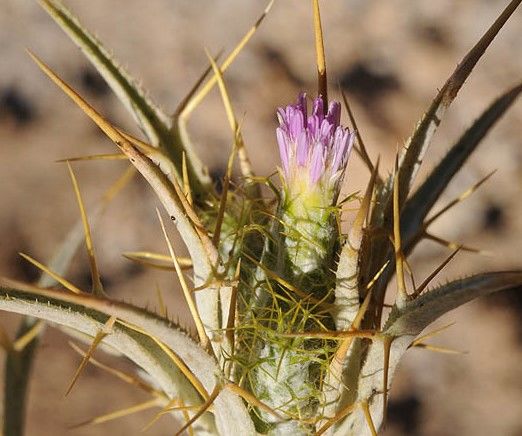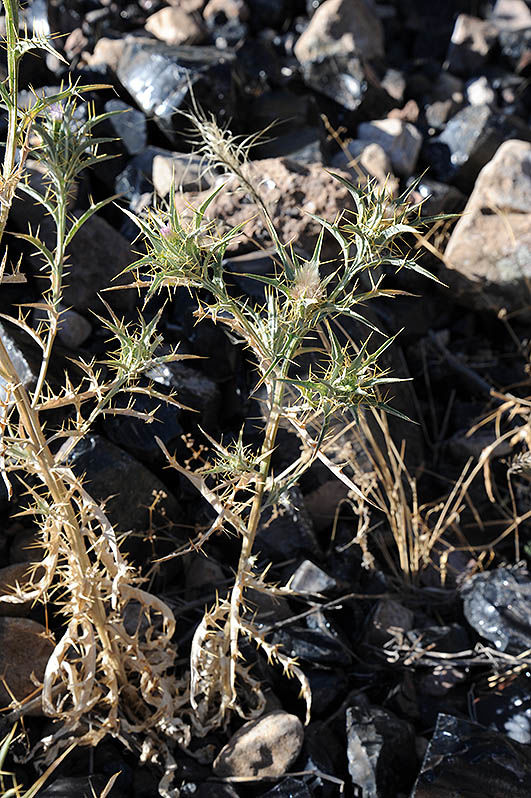Astragalus
picnomon acarna
Also known as: ["Astragalus acarna","Astragalus tataricus"]
Overview
A perennial herbaceous plant native to Eurasia, known for its taproot and pinnate leaves.
Benefits & Perks
["wildlife attractant (bees, butterflies, birds)","drought tolerant"]
Botanical Classification
| Phylum: | Magnoliophyta |
| Class: | Magnoliopsida |
| Order: | Fabales |
| Family: | Fabaceae |
| Genus: | Picnomon |
| Botanical Name: | Picnomon acarna |
Plant Characteristics
Basic Information
- Category: Herbs & Weeds
- Suitable Location: outdoor garden bed in open, sunny area
- Suitable For:
- Is Weed: No
- Allergenicity: low
Environmental Needs
- Climate: {"temperatureRange":"10–35°C"}
- Hardiness: {"zones":"5–9"}
- Misting: rarely required
- Drainage: Fast-draining to prevent waterlogging.
- Soil Type: Well-draining, sandy loam with organic matter.
Maintenance Level
- Maintenance Level: moderate
- Toughness Level: moderate
- Pruning Frequency: Annually or as needed to control size and shape.
- Pruning Intensity: Moderate; remove up to one-third of growth if necessary.
Care Details
Ideal Sunlight Coverage:
Full sun (6–8 hours/day); tolerates partial shade in intense summer heat.
Sunlight Tolerance Tips:
Acclimate gradually to intense sunlight; protect from harsh midday sun; adjust placement based on seasonal light intensity.
Care Requirements
Care Difficulty
moderatemoderate
Sunlight
full sun
Rotate plant for even growth; use sheer curtains in summer; move outdoors in spring/summer.
Watering
every 7–10 days during growing season, reduce in winter
Water thoroughly but infrequently; ensure soil dries between waterings; avoid overwatering.
Soil
well-draining, sandy loam
pH: Slightly acidic to neutral (pH 6.0–7.0).
Ensure pots have drainage holes; avoid heavy clay soils; amend with organic matter for nutrients.
Temperature
Prefers 60–85°F (15–29°C); tolerates mild frost but thrives in warm conditions.
Avoid sudden temperature changes; protect from drafts; adjust care for seasonal shifts.
Fertilizing
every 4–6 weeks during active growth
Fertilize only when actively growing; flush soil occasionally to prevent salt buildup; use organic options for gentle feeding.
Propagation
Methods
Stem cuttings or division.
Step-by-Step Propagation Guide
- Take a healthy cutting.
- Apply rooting hormone.
- Plant in medium.
- Maintain moisture.
- Wait for roots.
Best Time: Spring or early summer when the plant is actively growing.
Environment
Warm (70–75°F), high humidity, and indirect light.
Medium
Well-draining mix of perlite and peat moss or cactus soil.
Hormone
Optional but recommended for faster rooting.
Timeline
Roots in 3–6 weeks; establish in 2–3 months.
Tools Needed
Pruners, rooting hormone, pots, well-draining medium.
Quick Tips
Use sterile tools; keep medium consistently moist; provide bottom heat for faster rooting.
Pruning & Repotting
Pruning Guide
Method
Cut stems just above a leaf node or bud; avoid cutting into old wood.
Pruning Plan
Remove dead or overgrown stems to maintain shape and encourage new growth.
Tools
Pruning shears, sterilizing solution, gloves.
Checklist
Sterilize tools; prune during dormancy; remove dead/damaged parts; clean up debris.
Repotting Guide
Best Season
Spring, before the active growing season begins.
Pot Size
Choose a pot 1–2 inches larger in diameter than the current one.
Method
Remove plant gently; trim roots if needed; place in a new pot with fresh soil; water lightly.
Suggestions
Repot every 2–3 years or when roots fill the pot; provides fresh soil and space for growth.
Checklist
Check root bound status; prepare new pot with drainage; handle roots carefully; water after repotting.
Advanced Care Tips
Watering Mastery
Watering Checklist
Check soil moisture; water deeply; ensure drainage; adjust for season.
How to Apply Water Properly
Water at the base of the plant, ensuring moisture reaches the root zone; allow excess water to drain away; water early in the day to minimize evaporation.
Watering Schedule Tips
Water deeply once the top inch of soil is dry; reduce frequency in winter to prevent root rot.
Soil Improvement
Add perlite or coarse sand for drainage; incorporate compost for fertility.
Temperature Stress Management
Signs of Temperature Issues
Wilting, leaf drop, or stunted growth in extreme heat or cold.
Cold Stress
Slows growth; may cause leaf discoloration or dieback in prolonged cold.
Solution: Move to a warmer location; provide frost protection; reduce watering in cold periods.
Hot Stress
Leaf scorch, wilting, or reduced flowering in excessive heat.
Solution: Provide shade during peak heat; increase humidity; water more frequently but avoid waterlogging.
Fertilizing Guide
Fertilizing Checklist
Check growth phase; dilute fertilizer; apply to moist soil; stop in dormant periods.
Fertilizing Method
Use balanced liquid fertilizer diluted to half strength every 4–6 weeks during growing season (spring/summer); avoid fertilizing in winter.
Common Problems & Solutions
Toxicity Warning
Cats
ToxicCats are highly sensitive to the toxic compounds in Picnomon acarna. Ingestion can result in severe gastrointestinal and neurological symptoms, necessitating urgent veterinary care.
⚠️ Symptoms:
🌿 Toxic Parts:
⚡ Toxic If:
if eaten
Dogs
ToxicIn dogs, ingestion of Picnomon acarna can lead to severe gastrointestinal upset and systemic toxicity. The plant's irritants can cause significant distress, requiring prompt veterinary intervention.
⚠️ Symptoms:
🌿 Toxic Parts:
⚡ Toxic If:
if eaten
Humans
ToxicPicnomon acarna contains toxic compounds that can cause significant physiological distress upon ingestion. The plant's tissues contain irritants that affect the gastrointestinal and nervous systems, leading to severe discomfort and potential systemic effects.
⚠️ Symptoms:
🌿 Toxic Parts:
⚡ Toxic If:
if eaten
Frequently Asked Questions
Q: Is Picnomon acarna toxic to pets?
A: Reliable information on toxicity to pets is not available.
Q: How difficult is it to grow Picnomon acarna?
A: It has moderate care difficulty, requiring specific conditions.
Q: Does Picnomon acarna attract wildlife?
A: Yes, it attracts bees, butterflies, and birds.
Quick Reference
| Family: | Fabaceae |
| Care: | moderate |
| Light: | full sun |
| Water: | every 7–10 days during growi |
Get Expert Care Tips
Download the Plantious app for personalized care reminders and plant identification!
Google Play App Store








